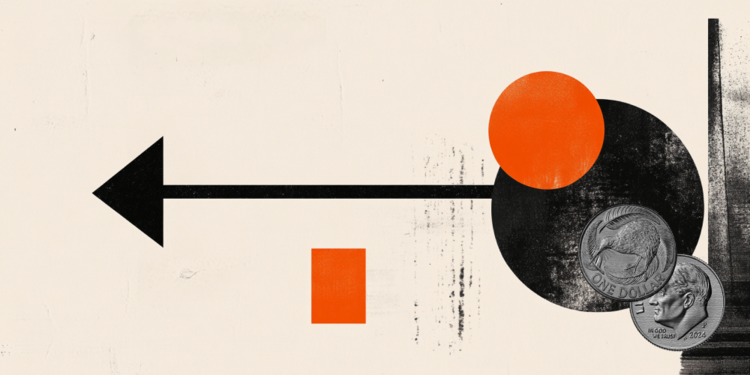Peace is just beyond the entrance, almost secret, which opens onto the marble facade of Palazzo Salviati Cesi Mellini. Via del Corso, which darts between Piazza del Popolo and Piazza Venezia, is a noisy and tireless coming and going of faces, tourists and cars. Yet, it is enough to cross the threshold of the ancient Roman noble palace which had many lives and as many transformations, to be inundated by a harmonious zenithal light ready to invest those who enter to transport them to a new and different dimension. Is the size of the Six Senses Romethe first Urban Hotel by Six Senses in Italy which is a candidate to act as a trailblazer for the numerous projects of the group currently spread across 19 hotels and resorts in 17 countries around the world and 38 upcoming openings already planned: in Italy the 2024 stop will be Umbria and already he fantasizes, with concreteness, of Milan.
The first Six Senses Urban Hotel in Italy in the heart of Rome
We visited the ancient Roman palace which has been transformed in four years of intuitions, reflections and interventions in the fulcrum of an original stay experience in the heart of Rome which is divided between the Trevi Fountain and the Pantheon, wedged between the shopping streets and Piazza San Marcello. The open space, which appears as a tiny fracture along the Corso, is dominated by the facade of the church of the same name, the restoration of which is an integral part of the Six Sensis Rome project.
Ninety-six luxurious rooms of which 30% are suites and, among them, three signature top suites, an exclusive Spaa restaurant, a splendid one courtyard garden outdoors and a panoramic terrace for a 360° view of the Eternal City – «With the first Urban Hotel in Italy we wanted to open an oasis in this city context to convey the sense of emotional hospitality that characterizes our hotels all over the world».
The surprise effect by Patricia Urquiola that mixes ancient and modern
Patricia Urquiolathe top architect designer who signed the project and who with her ideas gives life to everything she comes across with the vehemence of the Spanish tempered by the all-Italian harmony learned at the Castiglioni court, calls «surprise effect” this estrangement that strikes you as soon as you set foot in the lobby of the Six Senses Rome. «As happens in many ancient palaces in the heart of Rome» he tells us in a torrent of words, enthusiastic and enthralling as he caresses the details with which he wanted to characterize the spaces with his gaze: travertine declined in shades of color and different textures, carpets which refer to the ancient mosaics of the Roman era, the plants that envelop, perfume and dominate the view.
«Classicism and modernity had to mix in a balanced way: the large baptismal font from the 4th century re-emerged from the excavations at the beginning of the 1900s and brought back to view thanks to a glass porthole in the center of the floor of the restaurant area; the myths of ancient Rome which re-emerge in the decorations and the very strong formal essence of Quaroni which absolutely could not be forgotten» – he explains, referring to the articulated steel structure of 1950 inherited from the architect Quaroni’s intervention to dominate what has now become the all-day dining area, embellished by mosaic floors inspired by the decorations of the triclinium of the Domus di Vigna Lupinow in the Vatican Museums.
From the cocciopesto on the walls, which recalls the ancient Roman columns, to signal the entrance to the rooms, to the extensive use of travertine which accompanies the heart of the Roman architectural tradition and which characterizes seats, floors and walls, the entire renovation of the ancient building designed by Urquiola starts from the enhancement of the pre-existing declined with materials with an ancient heart. The classic elements are mixed with the contemporary design, the ancient with the modern.
Rooftop with a view (and what a view!) and menu inspired by recipes from the Roman Empire
There Hall, punctuated by five arched portals, it leads into a indoor garden designed by a cascade of plants which, illuminated by the perpendicular light which merges with the restaurant area of the BIVIUM Restaurant Café Bar, with a tasting menu inspired by recipes from the Roman Empire, and will soon also welcome a corner of Japanese food. For the dishes, natural ingredients come from local producers: from farm-raised and grass-fed meats and vegetable proteins to organic eggs and line-caught fish.
There large marble staircaserecovered and restored from the ancient structure, leads to the upper floors which culminate in the thousand square meters of the NOTOS rooftop: an immense 360 degree terrace over the roofs of Rome, lo skyline of domes and statues which catches the eye between the profile of the Altare della Patria and the bell tower of Montecitoriothe wooden boxes of medicinal plants from the garden of aromatic herbs to be used for the life of the hotel guests and terracotta ceramics. Figs, pomegranates, vines and strawberry trees the sunsets smell fragrant and if Andrea Sperelli and his Elena suddenly appeared from the pages of D’Annunzio’s Il Piacere to keep you company, you wouldn’t be too surprised: we are in Rome, among its roofs. And anything is possible.
Super spa for super treatments (including those for your four-legged friends)
Don’t call it a Spa: you are entering a sanctuary of well-being and beauty. The lights are dimmed, the world is out there running fast, you can only glimpse the outlines of the unforgettable roofs of Rome: all the rest is a succession of marbles that transform into steps, pools, mosaics, seats where you can savor the heat and water. There Spa of Six Senses Rome it is not a usual Spa: it is the modern reinterpretation of the ancient Roman baths, softened by representations of laurel which refer to the myth of Daphne and Apollo. A 60-minute circuit which is divided into a ritual intended to revive the body in an alternation between hot and cold.
The Romans on the baths were unbeatable and still today the ritual is of an energizing perfection: first the tepidariumbathroom with a heated wall and benches to lie down while listening to the water flowing through the fountain, then the calidariumsteam bath heated to 45 to 48°C with 98% humidity, and finally the frigidarium the cold pool from 10 to 12° for a boost of energy. The path had, and has, a rebalancing effect for mind and body. hammam for single treatments, a sauna and steam room are the norm for any self-respecting spa, but here’s the holistic treatment to dominate: the welcome is given by the non-invasive analysis that measures the biomarkers of the guest and helps the experts to understand what the body really needs, to then proceed up to the treatment rooms biohacking, sound therapy And body cocoonand then toherbal healing hamman to the laboratory ofAlchemy Barwhere you can learn how to mix herbs to prepare infusions, perfumes, creams and wraps.
Without forgetting the possibility of involving your best four-legged friend in the care of rebirth and well-being, who will have at his disposal moisturizing paw massages with post-bath healing balm and soothing shampoo. But, if you’re short on time or patience, the treat fresh and fluffy it’s a quick refresh from head to tail with the application of spritz shampoo and cleaning, followed by a quick dry for puppies that don’t like water.
The sustainability of balance and nature
In the strings of the Six Senses there are sustainability and natural balance which are divided between 100% green energy supply, intelligent collection and use of water, waste management, extremely limited use of plastic. And guests are invited to find out more about the hotel’s commitment in terms of environmental sustainability by participating in dedicated workshops and laboratories.
An example? You can learn the curative use of the plants grown in the hotel garden, or how to make a waterproof wrap with natural ingredients that replaces the plastic film. The Sustainability Curator of the Earth Lab, very kind, is available to discover the eco-design of the hotel and to test do-it-yourself ecological products to take home as a souvenir. Quite unforgettable.
Source: Vanity Fair
I’m Susan Karen, a professional writer and editor at World Stock Market. I specialize in Entertainment news, writing stories that keep readers informed on all the latest developments in the industry. With over five years of experience in creating engaging content and copywriting for various media outlets, I have grown to become an invaluable asset to any team.







